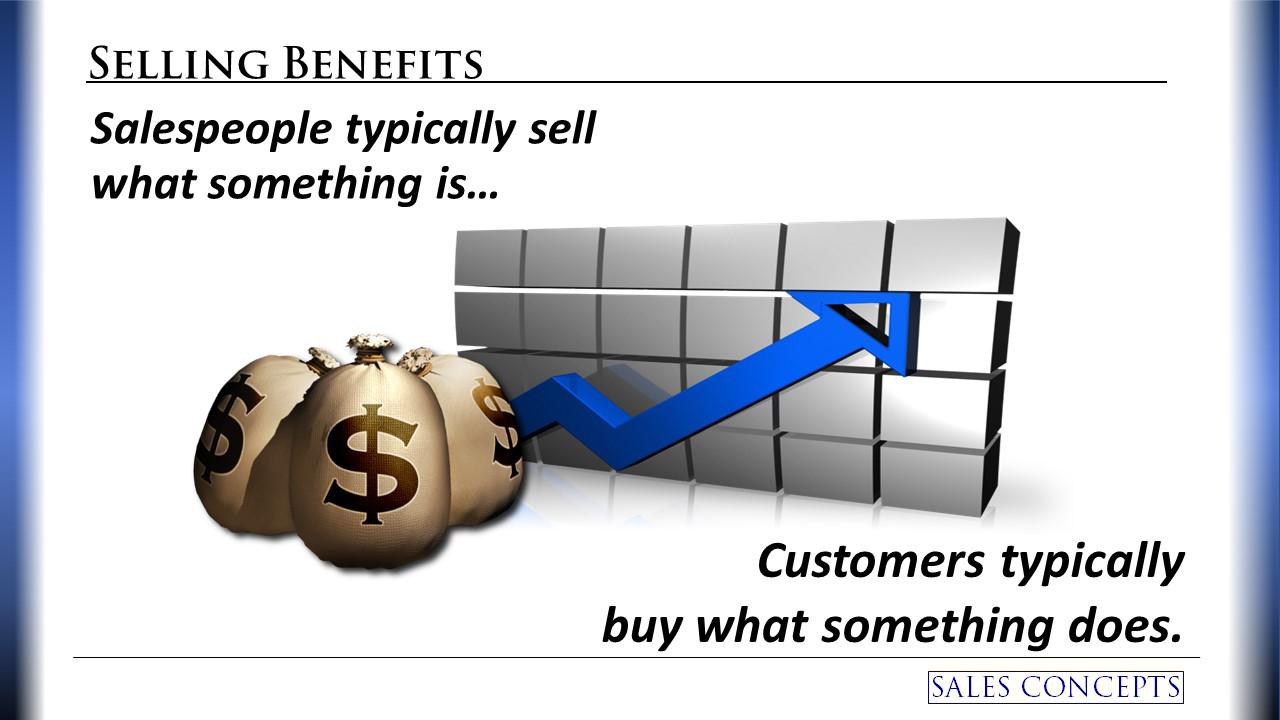Sales Leaders Win by Selling Value, Not Features.
Sales Leaders Win by Selling Value, Not Features.
August 25, 2025
There is one truth that often gets lost in the rush to pitch, present, and prove: prospects do not buy features; they buy value.
That might sound simple, but it is also the single most significant shift that separates top performers from those who struggle. Too many sales conversations stall because the seller focuses on what their product is, not what it does for the buyer. Features provide advantages, advantages lead to benefits, and benefits create value. And value is what your customer ultimately buys.
The Perspective of the Buyer: Where the Sale is Won or Lost
Think about your own buying decisions. Have you ever bought something you did not technically need? Maybe a pair of shoes, a golf club, or the latest gadget. Chances are, your decision was not based on the product’s feature set. It was based on the benefit you believed it would bring you: comfort, status, confidence, performance, or simply joy.
Your customers operate the same way. They make decisions emotionally first, then justify them with facts and figures. If your pitch focuses solely on product attributes, you are essentially asking buyers to do the heavy lifting of connecting the dots. That is risky. In the absence of clearly articulated benefits, what fills the gap is FUD: fear, uncertainty, and doubt in the mind of your prospect. And nothing kills deals faster than FUD.
Features vs. Benefits vs. Value
Let’s break this down with a simple example:
- Feature: A car has remote start.
- Advantage: You do not need to be in the car to start it.
- Benefit: You stay warm on freezing mornings or cool on scorching afternoons.
- Value: Peace of mind, comfort, and time saved every single day, which, depending on the buyer, could be priceless or worth nothing at all.
See the shift? Customers do not care that your product has something. They care about what that something means for them. And that meaning is different for each buyer.
Why Salespeople Struggle with Benefits
If value is what wins deals, why do so many salespeople default to talking about features?
Several reasons:
- It’s easier and faster to explain what a product is than to explore what it does.
- We assume buyers will make the mental leap on their own.
- We often fail to slow down enough to ask the right questions and truly listen.
- Sometimes, we do not even understand the benefits ourselves.
The reality is that selling benefits takes work. It requires curiosity, empathy, and the discipline to view every conversation from the buyer's perspective.
Turning Features into Value
So how do you make the shift? Here is a simple four-step process you can put into practice today:
List every feature of what you sell.
Identify all the benefits each feature could provide.
Create thoughtful questions to uncover whether the buyer cares about those benefits.
Ask follow-up questions to gauge how much it matters and whether it is enough to motivate change.
It is not about rattling off a long list. In fact, the longest list rarely wins. It is about connecting the right benefit to the buyer’s specific goals, risks, and motivations.
Price is Just Another Feature
Too many sellers fall into the trap of competing on price. But price is only one feature of your offering, and often the least compelling one. The best price is seldom the best value. Buyers know there are always hidden costs to going with the cheapest option. What they want is a solution that delivers worthwhile benefits with manageable risks, effort, and costs. That is where you win.
The Bottom Line
B2B buyers do not wake up thinking, I hope a salesperson calls me today to talk about product features. They wake up with dreams, business problems to solve, goals to achieve, and risks to manage. Your job is to show them how your solution creates meaningful value in their world.
When you approach selling from the buyer’s perspective, connecting features to advantages, advantages to benefits, and benefits to value, you do more than just close deals. You build trust. You build partnerships. And ultimately, you build a reputation as a sales professional who makes a difference.
People do not buy something because of what it is; they buy it because of what it represents. They buy what it does - for them.

